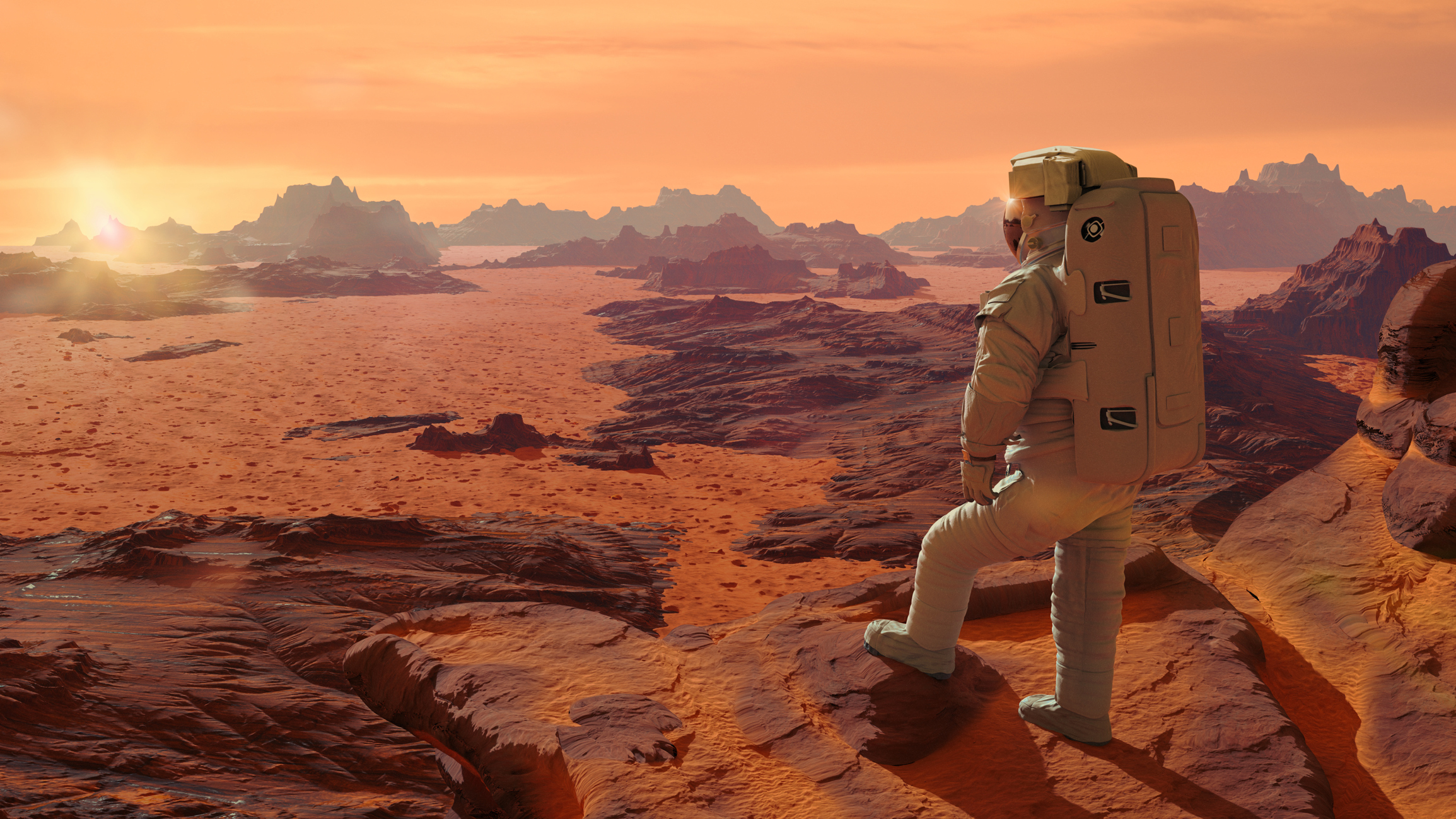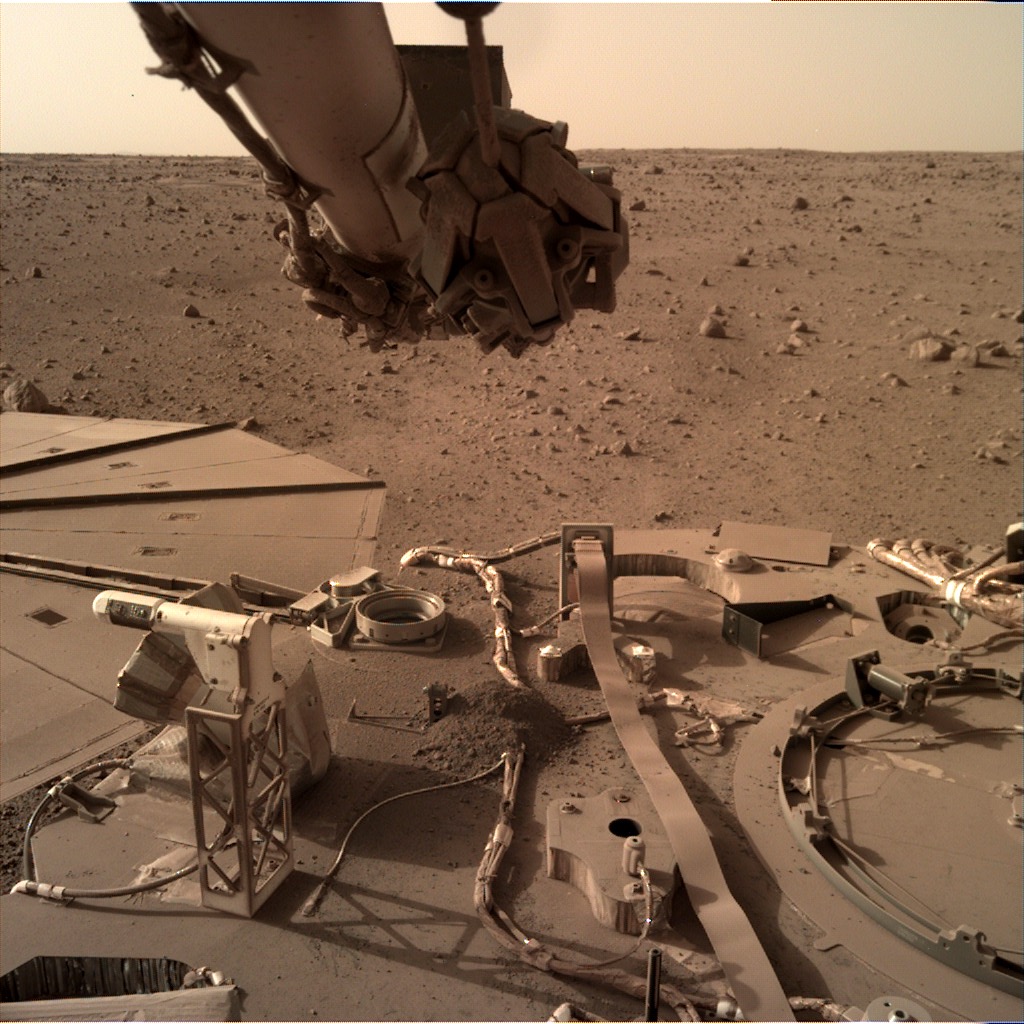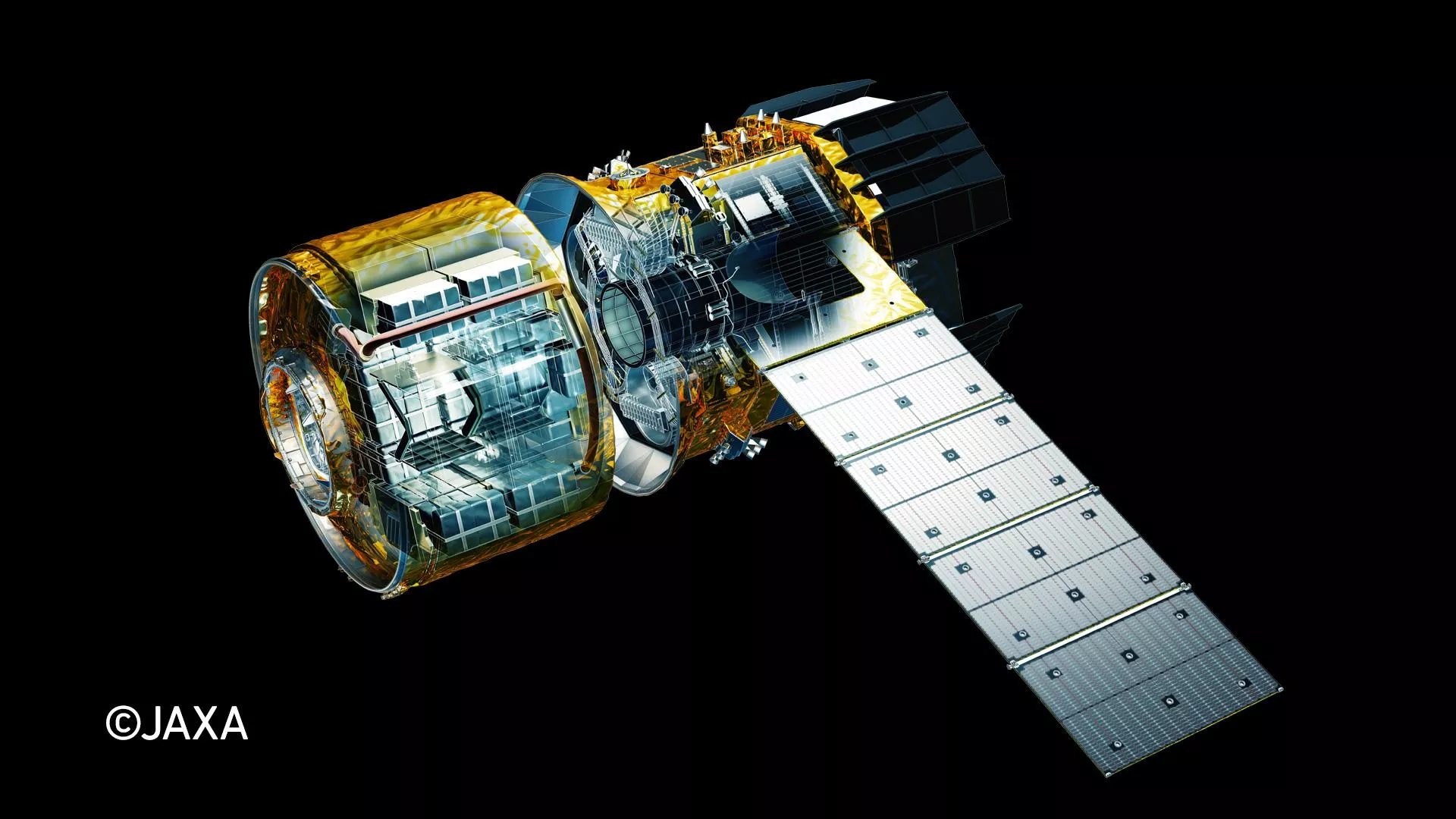Solar power is better than nuclear for astronauts on Mars, study suggests
Near the equator, anyway; nuclear power would still be the best bet near the poles.

Solar power would be the superior option over nuclear for crewed Martian missions near the planet's equator, a new study concludes.
Researchers found that a six-person Red Planet mission could be sufficiently powered by photovoltaic systems, adding on to decades of research on the benefits of solar power as used by robotic NASA Mars explorers such as the Spirit and Opportunity rovers and the InSight lander.
And humans could clean the solar panels on site, the study authors noted, preventing the problem of dust buildup that have plagued Mars spacecraft over the years. (A big dust storm killed Opportunity back in 2018.)
Related: How living on Mars could challenge colonists (infographic)
The team's modeling work suggests that, as long as the crewed mission is located near the sun-rich Martian equator, the metrics of solar intensity and surface temperature would have the superior tradeoff to a nuclear fission system in terms of mass needed and energy generated.
The model assumes that solar energy could be stored on site using a compressed hydrogen energy system (as hydrogen would likely be feasible to mine on the Martian surface, if needed).
"Nearer the equator, solar wins out; nearer the poles, nuclear wins," study co-lead author Aaron Berliner, a bioengineering graduate student in the Arkin Laboratory at the University of California, Berkeley, said in a statement.
Breaking space news, the latest updates on rocket launches, skywatching events and more!
The Martian poles are a more extreme environment for astronauts to endure, however, with less sunlight and bigger temperature swings than equatorial locales.

The study took into account not only the mass and energy of the two competing systems, but also environmental conditions such as how gases and particles in Mars' atmosphere absorb or scatter light. The goal was to better understand how much solar radiation would reach the Martian surface, and where best to deploy solar arrays.
The solar arrays would use electricity to split water molecules into oxygen and hydrogen, with the hydrogen being put into pressurized vessels for storage. Later on, the hydrogen would be electrified within fuel cells to produce power. Unneeded hydrogen could be repurposed, helping generate ammonia to fertilize plants, as long as the hydrogen is combined with nitrogen similarly to how that is done on Earth.
The researchers acknowledged that other technologies, such as water electrolysis to create hydrogen and hydrogen fuel cells, may also be used on Mars. These systems tend to be costly on Earth, but could be "game-changing" on the surface of the Red Planet, where everything would need to be shipped at large cost from our own planet or produced with the resources on hand at the surface.
Berliner and fellow co-lead author Anthony Abel, a chemical and biomolecular engineering Ph.D. student at UC Berkeley, are both members of the Center for the Utilization of Biological Engineering in Space (CUBES), which has several academic institutions in its membership.
The solar power situation aligns with work that CUBES already has underway, the statement said. The group aims to engineer microbes that can produce plastics from carbon dioxide and hydrogen, and pharmaceuticals from carbon dioxide and sunlight.
Because the new paper creates a "budget" for electricity and hydrogen on Mars, the researchers plan to use it to further develop the CUBES biotechnologies.
"The hope is ultimately to build out a full model of the system, with all of the components included, which we envision as helping to plan a mission to Mars, evaluate tradeoffs, identify risks, and come up with mitigation strategies either beforehand or during the mission," Berliner stated.
The new study was published today (April 27) in the journal Frontiers in Astronomy and Space Sciences.
Follow Elizabeth Howell on Twitter @howellspace. Follow us on Twitter @Spacedotcom or Facebook.
Join our Space Forums to keep talking space on the latest missions, night sky and more! And if you have a news tip, correction or comment, let us know at: community@space.com.

Elizabeth Howell (she/her), Ph.D., was a staff writer in the spaceflight channel between 2022 and 2024 specializing in Canadian space news. She was contributing writer for Space.com for 10 years from 2012 to 2024. Elizabeth's reporting includes multiple exclusives with the White House, leading world coverage about a lost-and-found space tomato on the International Space Station, witnessing five human spaceflight launches on two continents, flying parabolic, working inside a spacesuit, and participating in a simulated Mars mission. Her latest book, "Why Am I Taller?" (ECW Press, 2022) is co-written with astronaut Dave Williams.
